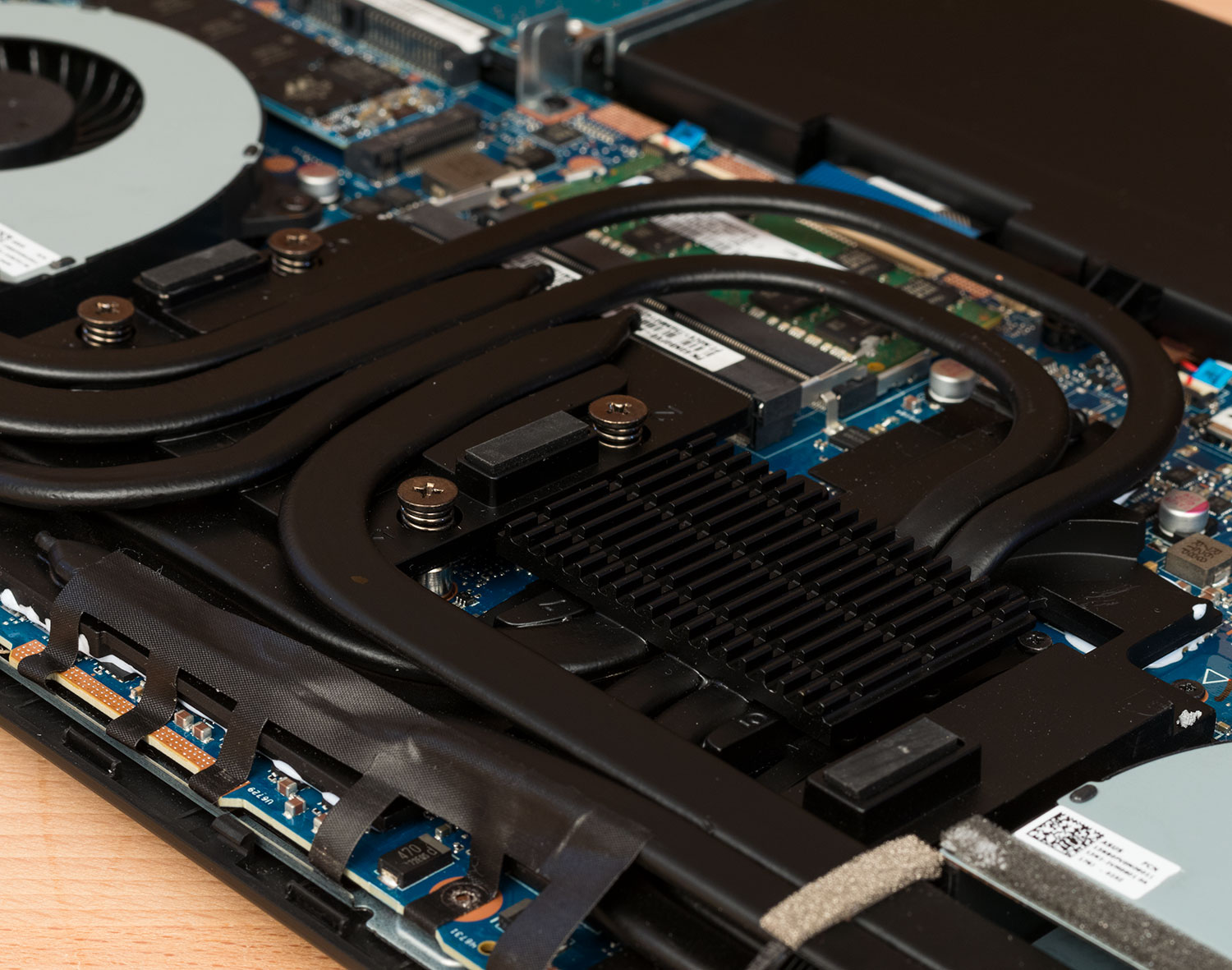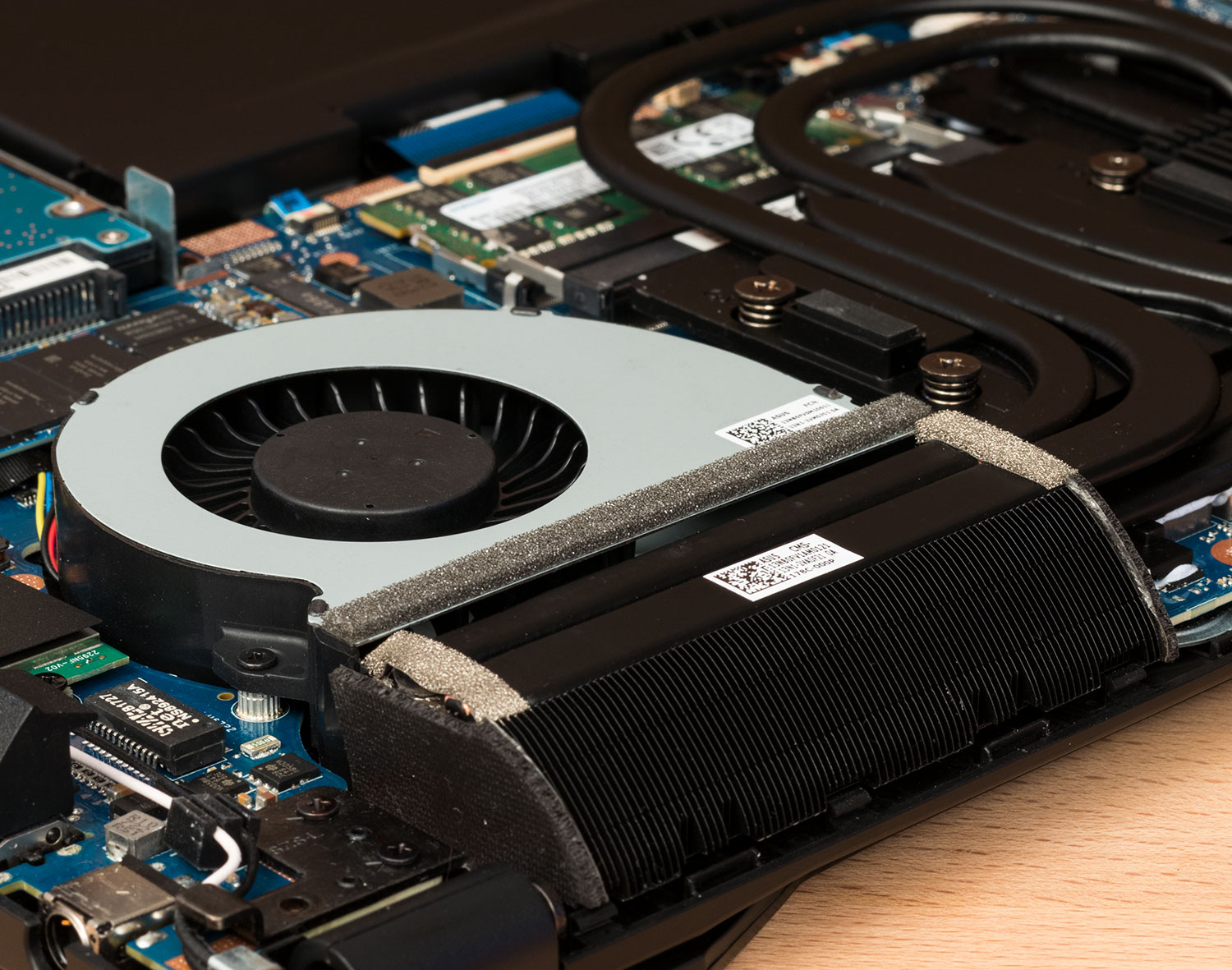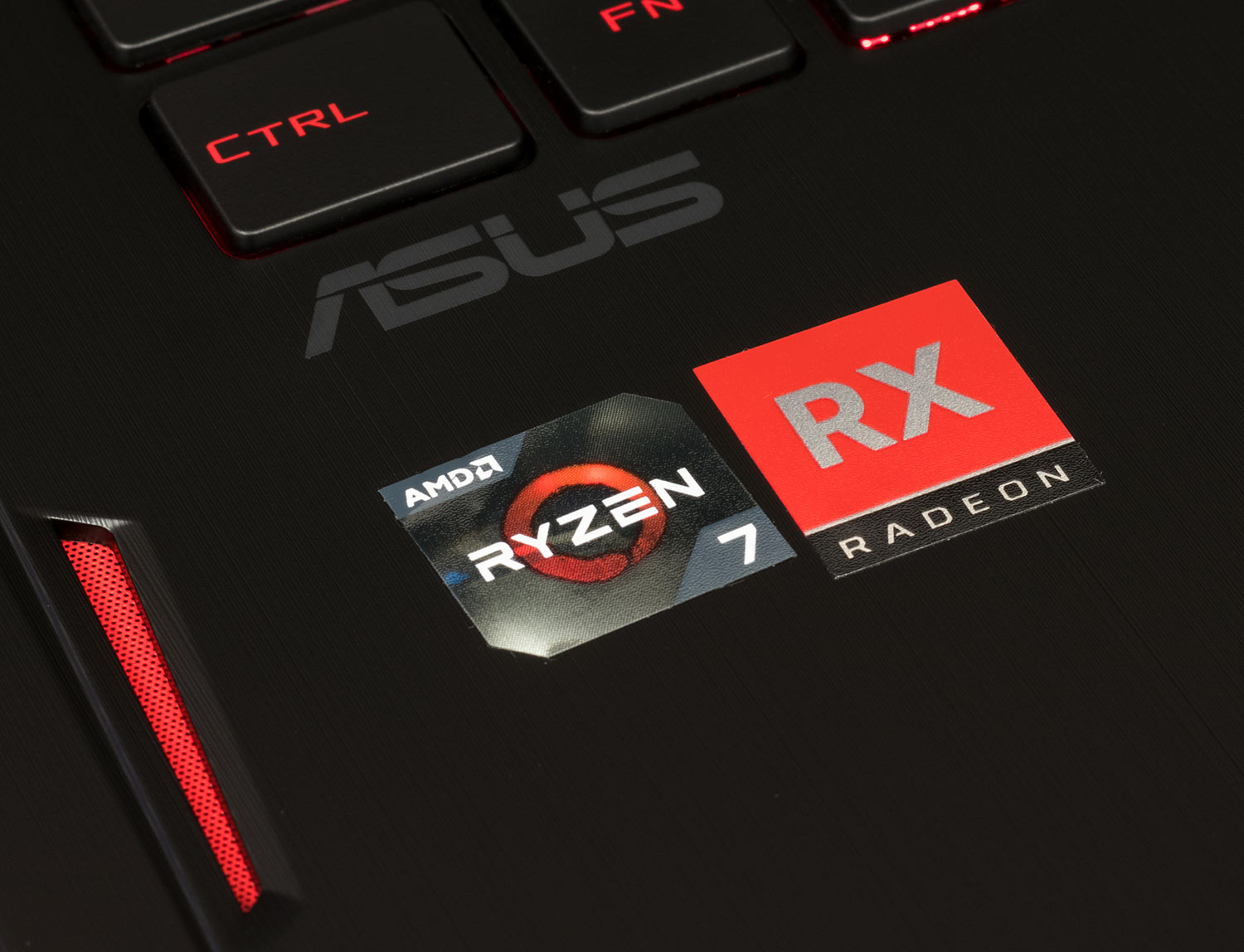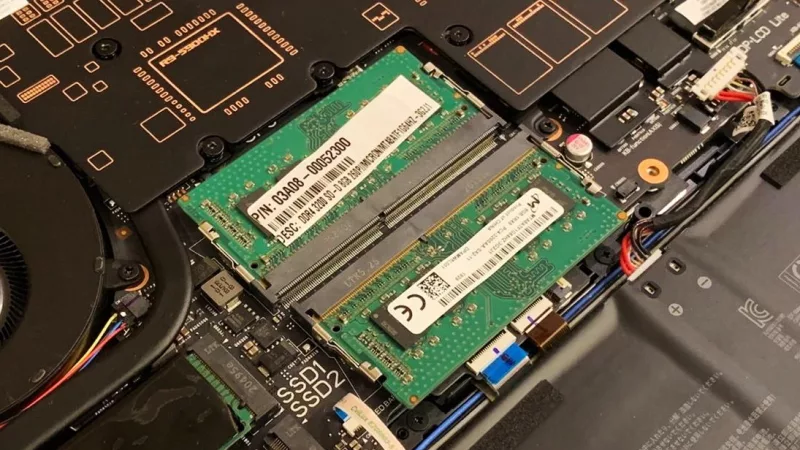The ROG Strix GL702ZC delivers desktop Ryzen and discrete graphics in a portable package
AMD’s Zen architecture officially trickled down to laptops with mobile Ryzen CPUs that were announced at the end of October. These chips have four cores and integrated Vega graphics, but they can’t match the cores, speed, and cache available on the desktop. But what if you didn’t have to settle for one of those mobile versions? Our ROG Strix GL702ZC is the first laptop with a desktop-grade Ryzen CPU, squeezing the Ryzen 7 1700 processor alongside discrete Radeon RX 580 graphics. Despite housing these beefy components, the 17.3" chassis measures just 1.3” thick, so it’s still portable enough to carry around.
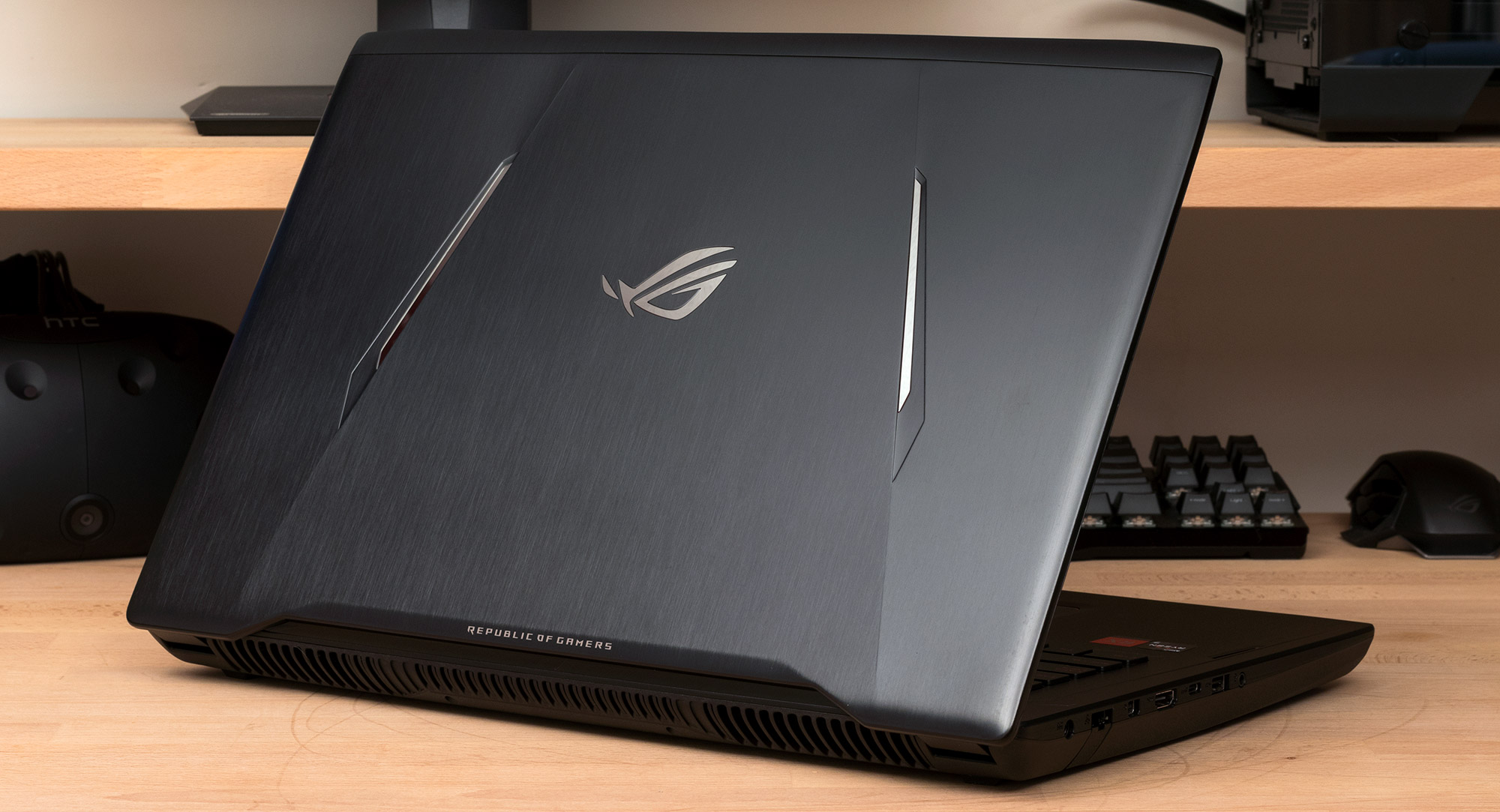
Potent desktop power
As CPUs have gained more cores, developers have strived to make their programs more multi-threaded, and power users have had additional freedom to perform more tasks in parallel. AMD built the Zen architecture with this progress in mind, creating a processor ready for gaming, content creation, and heavy-duty multi-tasking. The Ryzen 7 1700 CPU in the Strix GL702ZC is the exact same silicon available on the desktop; it has eight physical cores with simultaneous multi-threading allowing up to 16 parallel threads. That means 16 individual CPU utilization graphs in the Windows Task Manager, an impressive sight on such a portable machine. The chip has a peak turbo speed of 3.7GHz for a single core, and when fully loaded, it's capable of pinning all eight at 3.1GHz.
Ryzen's extra cores are great for gamers who stream while they play and content creators who play while they work. You can easily encode videos, render scenes, or compile code while doing other things. We pair the CPU with dual SO-DIMM slots that support up to 32GB of RAM. The GL702ZC-WB74 variant selling in North America comes with 16GB of DDR4-2400, giving your games and applications plenty of memory to avoid swapping to disk. A second 16GB stick can be added to to max out the config.
The gaming experience is fueled by another desktop part, AMD's Radeon RX 580 GPU. The chip uses a complete Polaris 20 die with all the requisite compute units enabled. Cramming it into a portable laptop chassis required some adjustment, though. The 1077MHz maximum frequency is a little below the stock clock of desktop implementations, allowing a better balance of performance and temperature inside the chassis. Video memory interfaces with the GPU over a 256-bit bus that's the same as on the desktop. There's 4GB of dedicated GDDR5 onboard, and while it's typically clocked at 7GHz in desktop cards, the GL702ZC cranks the memory frequency to 8GHz.
Capable graphics equip the GL702ZC for more than just gaming. The GPU is also powerful enough to meet the requirements for virtual reality headsets like the Oculus Rift and HTC Vive, and its impressive compute power is ripe for OpenCL-accelerated applications.

Stay cool under pressure
The Ryzen 7 1700 and Radeon RX 580 offer immense power for gaming and more, but keeping their thermals in check is a challenge, making efficient cooling paramount for maintaining performance. You don’t have the luxury of bigger desktop coolers when all the components are cozied up next to each other inside a 1.3”-thick chassis. Even so, the GL702ZC manages to keep its cool, serving up gaming, VR, and content creation without stumbling.
Look underneath the chassis' skin, and you’ll find a cooling system reminiscent of a train yard. Six heatpipes snake their way across the laptop, each connected to one or both of the blower-backed radiators. It’s a complex arrangement in which some heatpipes are exclusive to a single component, while others support multiple parts; the CPU makes contact with four heatpipes, the GPU is covered by three, and the VRMs get a pipe of their own. This robust design avoids clock throttling even under sustained heavy loads like gaming combined with streaming. The graph below shows the CPU and GPU clocks for an hour-long session streaming Playerunknown's Battlegrounds while OBS streamed a software-encoded x264 feed at 1080p60 and 6Mbps.
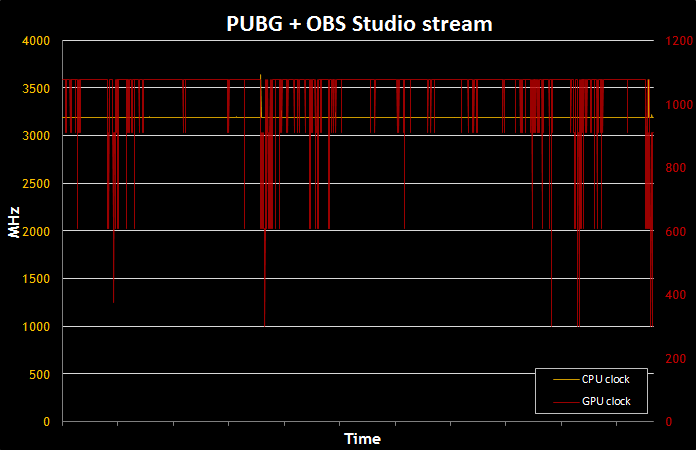
The CPU held steady at its peak all-core frequency of 3.1GHz for the duration of the test. The GPU largely maintained its maximum 1170MHz clock speed, as well, but there were multiple dips during the hour-long session. Most of these drops seem to be related to using the in-game inventory system and the menus between rounds; they don't appear to be related to thermals, and they didn't affect gameplay.
Beauty and the beast
Desktop-grade guts are great, but when so much of the gaming experience is delivered by your monitor, a crappy panel can spoil the fun all on its own. We paid close attention to the display in the Strix GL702ZC, opting for a 17.3” with FreeSync support. Otherwise known as Adaptive-Sync, this variable refresh technology adjusts the refresh rate of the display to match the frame rate of the GPU. By only delivering new frames when they're ready, FreeSync reduces perceptible stuttering and input lag while also eliminating visual tearing.
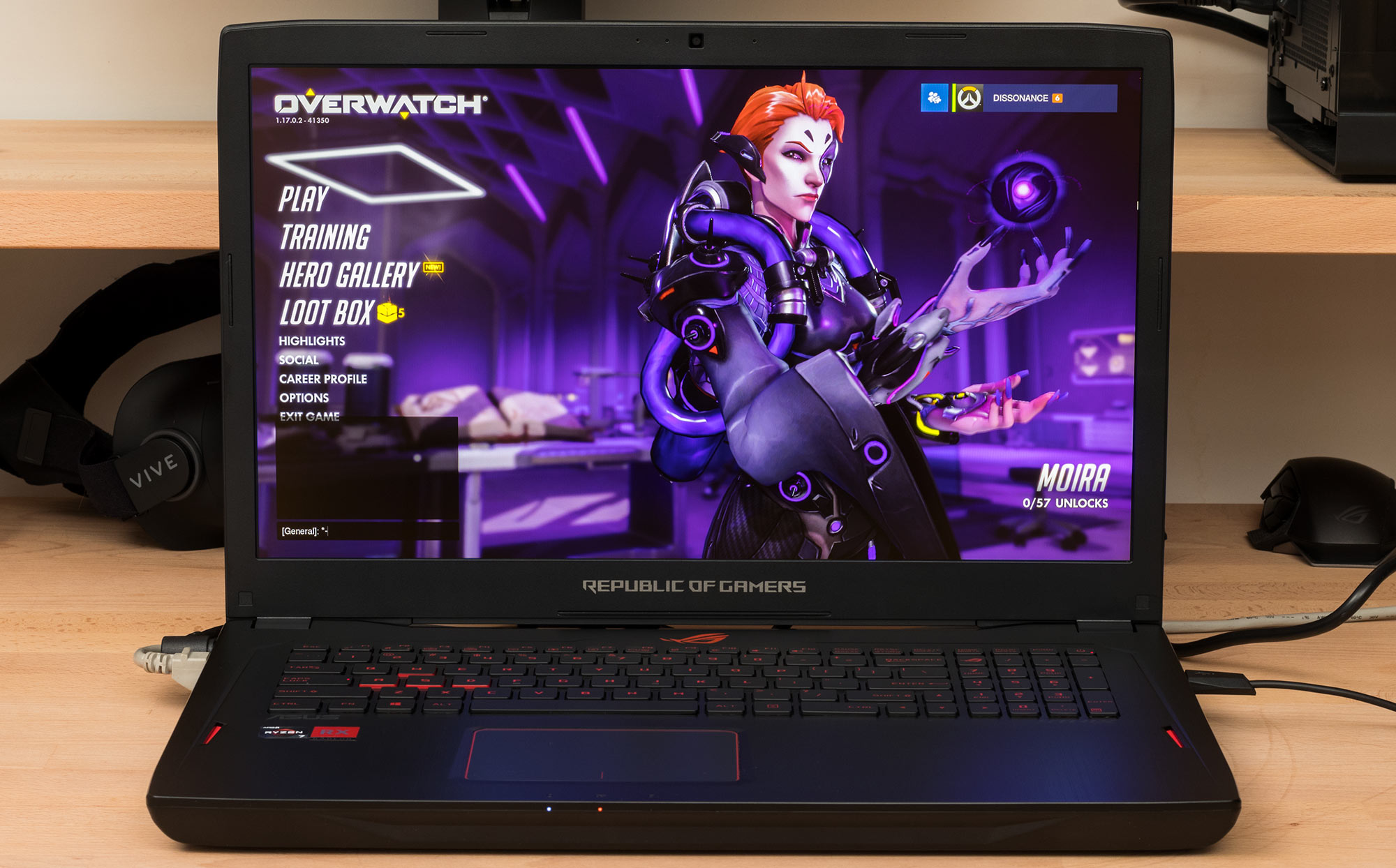
The Ryzen-infused Strix is available with two display configurations; the GL702ZC-WB74 version for North America has a FreeSync range of 40-60Hz, while other regions can opt for a 120Hz upgrade. Both screens have full sRGB gamut coverage, so you'll see every shade whether you're playing games or editing photos. And their IPS-type panels have wide viewing angles that ensure colors look great whether you're in the driver's seat or playing spectator during a friend's turn.
Game on
Regardless of the refresh rate, the GL702ZC's display has 2.1 million pixels. The 1080p resolution perfectly matches the capabilities of the Radeon RX 580 GPU, which can easily deliver 60-120FPS depending on the games and settings you choose. We tested performance on our GL702ZC-WB74 sample across a handful of popular games. We used Fraps and PresentMon to gather individual frame times during 60-second sequences of gameplay and then converted the data to frames per second for easy interpretation. Click the buttons below the graph to switch between games.
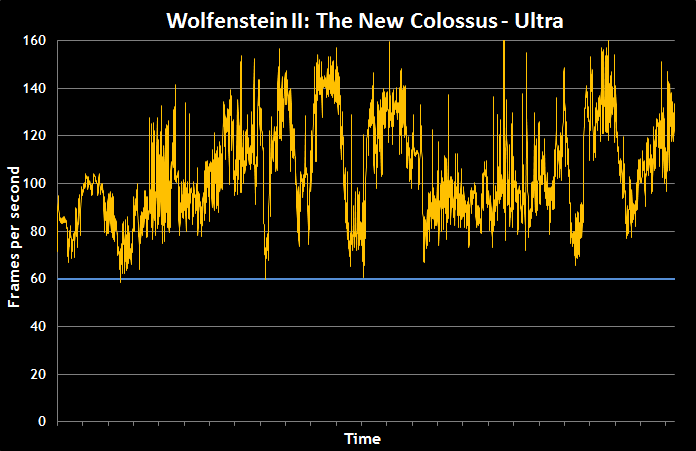
Wolfenstein II uses the Vulkan API initially created by AMD, and performance is excellent as a result. The game runs at well over 60 FPS even with the details turned all the way up, and it feels impeccably smooth. Doom performs similarly well with Ultra settings, which is no surprise considering it runs on the same core engine technology. Make sure you have the renderer set to Vulkan instead of OpenGL, though. Frame rates are much higher in Vulkan mode, and you can feel the difference while playing.
Overwatch runs like a champ even with the graphical settings turned all the way up. Frame rates were well over 60 FPS for the vast majority of our testing. Performance is similarly excellent in Destiny 2, though we only used high details in that game. The graphics still looked awesome, with fluid movement and flawless animation.
Performance dipped below the display's maximum refresh rate in GTA V and PUBG, but FreeSync ironed out the wrinkles in both cases. Variable refresh technology makes lower frame rates feel smoother by eliminating the stuttering or tearing that occur with a fixed refresh rate. There were no obvious hitches as we raced through the streets of Grand Theft Auto with all the eye candy enabled. Scavenging in Playerunknown's Battlegrounds also felt surprisingly smooth given how frequently the frame rate dipped below 60 FPS during our testing. The display compensates for frame rates as low as 40 FPS, which was enough to cover all but a few brief dips. FreeSync is a godsend in demanding games like PUBG.
Popping the hood
The GL702ZC’s combination of a 256GB SSD and 1TB HDD ensures snappy load times for applications as well as ample space for all your games. Although the North American configuration uses an M.2 drive with a SATA interface, the slot also supports NVMe SSDs up to 512GB.
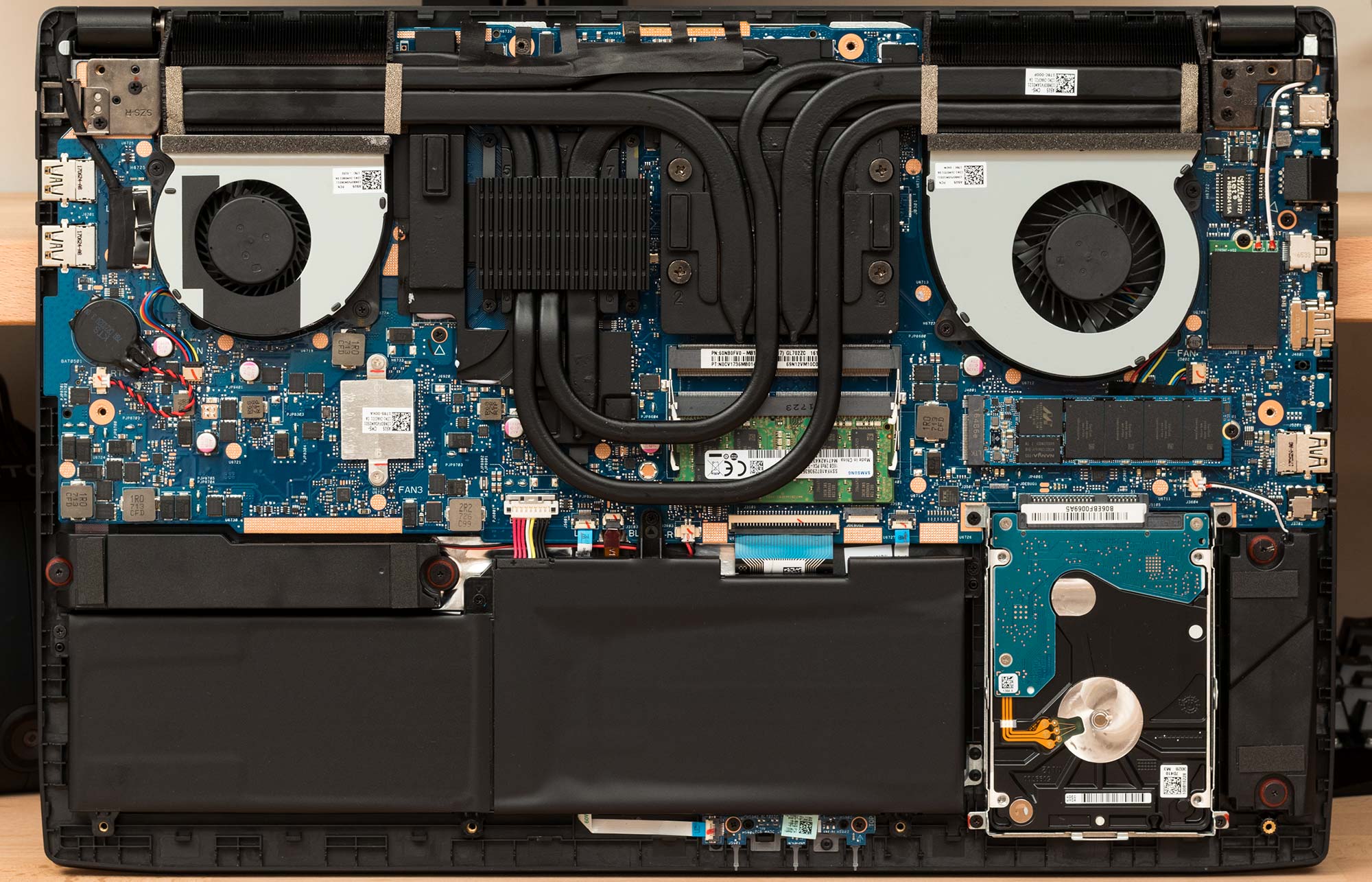
Getting inside the chassis is easy: tear your eyes away from the brushed metal lid, and you’ll find the bottom panel comprises a single piece secured by 10 Philips screws. These aren’t hidden behind any rubber feet, so they’re easy to locate and quick to remove. After that, you can pry off the panel with a plastic spudger. Your reward is a sweet view of the insides along with access to the M.2 SSD, the 2.5” HDD, and the dual SO-DIMM slots. Check with your local ASUS ROG representative for details on whether upgrading any of these parts will void the warranty in your region.
Although the Strix GL702ZC flanks its 17.3” screen with relatively narrow bezels, we still managed to fit in a full-sized keyboard with number pad. Subtle red accents surround the touchpad and WASD keys, and they're matched by red lettering and backlighting for the entire keyboard. A generous 1.6 mm of key travel keeps the pining for your desktop keyboard to a minimum, while n-key rollover ensures all of your frantic inputs register precisely, no matter how many keys you’re mashing at once.

There’s ports aplenty on the GL702ZC, including HDMI and Mini DisplayPort for hooking up external displays or a VR headset. Three Type-A USB 3.1 Gen 1 ports are on hand for peripherals along with one reversible Type-C USB 3.1 Gen 2 capable of transferring data at 10Gbps. Wireless connectivity comes via an 802.11ac with a 2x2 antenna that supports the less congested 5GHz band for a more reliable connection. When multiplayer gaming calls for the low latency of wired networking, the Gigabit jack saves you from sacrificing a USB port for an Ethernet dongle.
| ROG Strix GL702ZC-WB74 | |
|---|---|
| CPU |
AMD Ryzen, 8C/16T, 3GHz (up to 3.7GHz Max Turbo) |
| GPU | AMD Radeon RX 580 4GB GDDR5 |
| Display | 17.3” IPS-type 60Hz FreeSync |
| Resolution | Full HD 1920 x 1080 |
| Memory | 16GB DDR4-2400 |
| Storage | 256GB M.2 SSD + 1TB 5,400-RPM HDD |
| Networking | Gigabit Ethernet, dual-band 802.11ac Wi-Fi |
| Connectivity |
1 x Type-C USB 3.1 Gen 2, 3 x Type-A USB 3.1 Gen 1, 1 x HDMI, 1 x Mini Display Port, 1 x SDXC card reader, 1 x AC adapter plug |
| Battery | 76Wh |
| Dimensions | 16.3" x 11" x 1.3" (WxDxH) |
| Weight | 6.6 lbs |
| MSRP | $1499 USD |
| Availability (USA) | Micro Center, ASUS Store, Amazon, Best Buy |
ROG's Strix GL702ZC is the only gaming laptop available with a proper desktop Ryzen CPU. The powerful eight-core chip makes short work of multitasking and multi-threaded workloads like video editing and 3D rendering, and it's backed by a discrete Radeon RX 580 GPU that can handle both gaming and VR. Together, this desktop duo delivers enough portable firepower for serious work or play—or both at the same time. The ROG Strix GL702ZC-WB74 is available in the USA for $1499 USD. Check the table above for retailers selling this unique AMD gaming laptop in your region.
